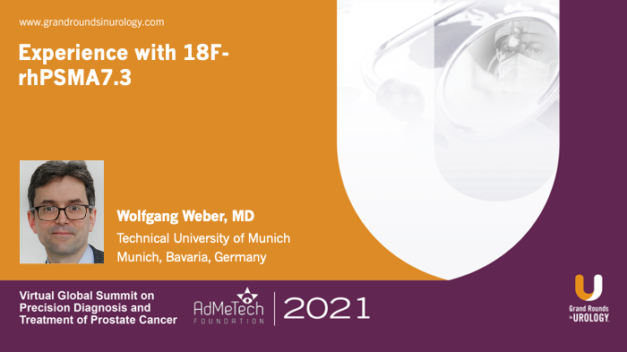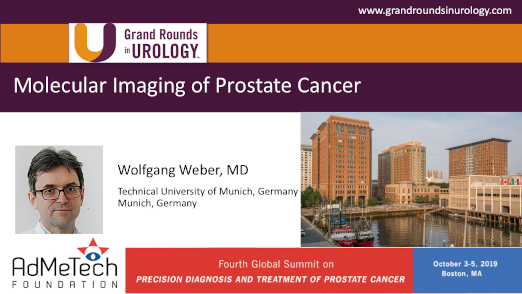Experience with 18F-rhPSMA7.3 for Prostate Cancer
In this 6-minute presentation, presented during the 2021 Virtual Global Summit on Precision Diagnosis and Treatment of Prostate Cancer and supported by Blue Earth Diagnostics, Wolfgang Weber, MD, Professor and Chair of the Department of Nuclear Medicine at the Technical University of Munich in Germany (TUM), discusses 18F-rhPSMA7(.3) as a promising tracer for imaging prostate cancer for primary staging and in the case of biochemical recurrence, explaining that limited renal excretion facilitates evaluation of the prostate and the prostate bed before surgery. Dr. Weber explains that prospective registration trials have completed accrual, and the use of radiohybrid prostate-specific membrane antigen ligands (rhPSMAs) for therapy of prostate cancer is being evaluated preclinically.
Read More

